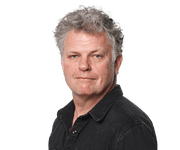The adoption of the Indigenous name K’gari for what was formerly Fraser Island is a timely reminder of the continuing First Nations-led quest to decolonise racially offensive Australian topographic and urban nomenclature.
Colonisation replaced many Indigenous placenames on the Australian map with those of (mostly) white men who murdered First Nations people. Countless continental features, meanwhile, have been renamed not to commemorate the massacred but the very act of massacring them.
Other places – including Gladstone, Mackay and Townsville, all in Queensland – honour European men who benefited from slavery or “blackbirding’’ in pre-federation Australia.
This is no surprise given colonial Australia’s foundations are tarnished with slavery money. But is it appropriate? Should there be a far broader reversion to original names out of respect to traditional custodians and as a means to enhance civic understanding of the dark deeds of the men such places lionise?
What, for example, should become of Coen (the river, township and lake on Cape York Peninsula)? It honours Jan Pieterszoon Coen, fourth governor general of the Dutch East Indies, who committed atrocities against Indigenous people in the name of colonial commercial dominance.
Heightened scrutiny of some place names comes as Australia glacially moves towards greater understanding of Indigenous peoples’ sensibilities about – and generational trauma resulting from – violent colonisation. The nomenclature question is as symbolically central as the national celebration of dates such as 26 January.
So prolific are inappropriate Australian placenames, many non-Indigenous Australians seem inured to their violent historical connotations.
Consider Murdering Creek (21 Australian placenames – 11 in New South Wales alone – feature “murdering”; ever wondered why?). There are Skeleton creeks. Skull Hole. At least one Butcher’s Creek. And think about Poison Creek, -Point, -Waterhole, or -Swamp (strychnine, laced through flour, was a favoured colonial method of dispersing – that transparent colonial euphemism! – “troublesome blacks”).
Consider, as an example, Butcher’s Creek, on Queensland’s Atherton Tablelands. It was – as it had for countless millennia been – Boonjie, named by the Ngadjon rainforest people. In 1887, after a massacre committed by white miners and native police, it was changed commemoratively to Butcher’s Creek. The name endures officially. It should revert to Boonjie, which is how local custodians still reference it. What happened there is central to the region’s bloody history. It won’t be forgotten but needn’t be celebrated in cartography or signage.
So many – far too many – places retain equally unjustifiable names. Perhaps five continental placenames, for example, still include the n-word – as a precedent to “creek” or in conjunction with “head”.
Curiously some explorers and early settlers did confer original Indigenous placenames or derivations onto their maps (think Canberra, its genesis in the native Ngambri). The explorer Thomas Mitchell conferred more Indigenous placenames on the European map of Australia than any other 19th century explorer, the toponymist Jan Tent says.
This raises more questions. Given Indigenous names were deemed appropriate enough for colonial cartographers, must a European name be racially offensive to be worthy of replacement with the Aboriginal original? Might not such renaming be a nobly appropriate end in itself?
After all, dual acknowledgment (Melbourne/Naarm; Brisbane/Meanjin; Sydney/Warrane) by many enduring colonial institutions, including governments, is already effectively customary. Might this be part of an evolution towards permanent reinstatement of original Indigenous nomenclature of major cities?
Tent’s research also shows how diving deep into Australian toponymics necessarily takes you to morally fraught places. Despite Mitchell’s penchant for mapping Indigenous names, Tent writes in an unpublished paper of how Mitchell “also needs to be recognised for a darker place naming’’.
after newsletter promotion
He is referring to Mount Dispersion in NSW, named by Mitchell to commemorate his massacre of Aboriginal people in 1836. In 2020 it was officially renamed Mount Dispersion Massacre Site Aboriginal Place.
Buildings, institutions, streets, and federal and state electorates are also sharply in the sights of nomenclature reformers.
The surname of John Batman, syphilitic grifter and murderer of Tasmanians, was replaced federally with that of the Indigenous activist William Cooper in 2019. McMillan, named after the explorer and mass killer Angus McMillan, was changed in 2018.
The Western Australian electorate Canning, honouring William Canning, who enslaved Aboriginal people to build a stock route, should be renamed.
Fraser Island honoured Eliza Fraser. After being shipwrecked there in the 1830s she wrote a fallacious, racially charged account of her “captivity’’ by the Butchulla people.
Her name is now officially, appropriately, erased from the island’s name. But she was by no means the worst colonial offender celebrated in Australian nomenclature.
Governor Lachlan Macquarie stands, perhaps, as the most eulogised and memorialised colonial Australian figure after James Cook. So much history records him as the “great civiliser” ahead of the mass murderer and terrorist he became at the 1816 Appin massacre. A bank, a harbour and river honour him.
But it is Macquarie University, Sydney, that his biggest critics have in their sights. Stay tuned.

